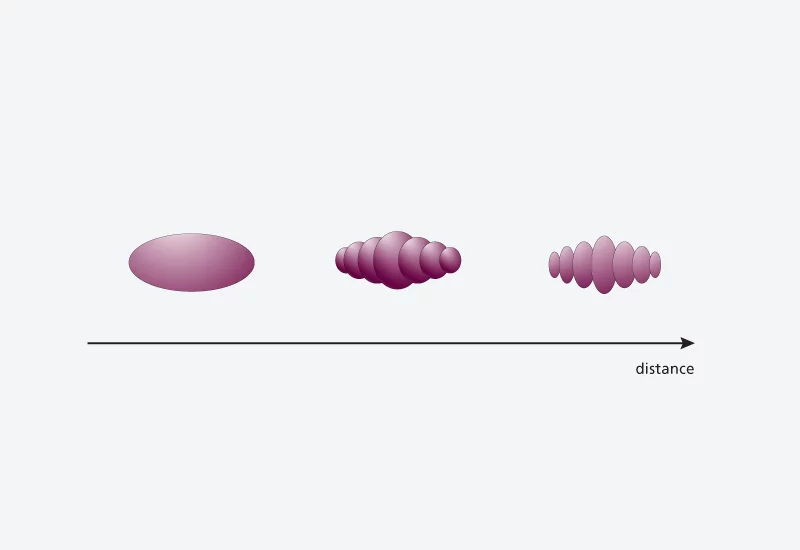SwissFEL will create X-ray light with laser-like characteristics. The strong amplification of the light needed is produced by a process known as micro-bunching – electron packets break up in the undulator into thin layers which emit light in phase. At the same time, another process called seeding is being studied, in which one will be able to establish the properties of the light even more precisely.
The SwissFEL X-ray light will have the qualities of laser light. Light has the inherent nature of being a wave – and the light that we encounter in everyday life consists of many uncoordinated
waves – specialists say that it is incoherent. Laser light, on the other hand, is coherent – its waves are in phase
. This means that the wave crests of all waves coincide, as do the wave troughs. This coordinated oscillation makes laser light so powerful because all parts of the light work together and the light can have its maximum effect – in the same way as how a number of people can best get a swing to move, when everyone pushes in the same direction at the same time.
At SwissFEL, the X-ray light will be radiated by electrons as they pass through the undulator. Initially, the electrons leave the accelerator in extended packets
. On their way through the undulator, the electrons emit X-ray light and – this is what is special about a free electron laser – the light then reacts back on the electron packets and alters them. Under the influence of the X-ray light, the large packet then breaks up into slices
– the technical term is micro-bunches
that travel one behind the another – at a separation distance that is the same as the wavelength of the light being emitted. Thus, the individual micro-bunches now radiate their light in phase. The light that is produced in this way is now more intense than that which had previously acted upon the electrons – it has been amplified. The process continues, the micro bunches become shorter and the light becomes more intense. The intensity of this process is illustrated by the fact that the amplification is liked by specialists to an avalanche effect.
Seeds for the light
The production of X-ray light at SwissFEL does not begin on its own – it always needs some light that can then be amplified. In the simplest case, one uses for this some of the light that is spontaneously radiated by the electrons at the start of their path through the undulator. This is then amplified so that a laser pulse is ultimately produced. The disadvantage of this procedure is that one cannot plan in advance with sufficient precision which characteristics the amplified light is going to have. Thus, successive light pulses will be slightly different from one another – in certain cases, this makes experiments difficult.
Alternatively, one could feed in light with the correct properties from outside as a seed
for the X-ray laser. In this way, one could specify the properties of the final light pulse. The problem with this, however, is that one would need X-ray light from an X-ray laser as the seed, which one does not have. The goal of the researchers in the SwissFEL team is to find a way in which this process, known as seeding
, can nevertheless be used.
Text: Paul Piwnicki
Additional information
- Current News SwissFEL
- Homepage of the SwissFEL project
- Film of the new large-scale facility SwissFEL

